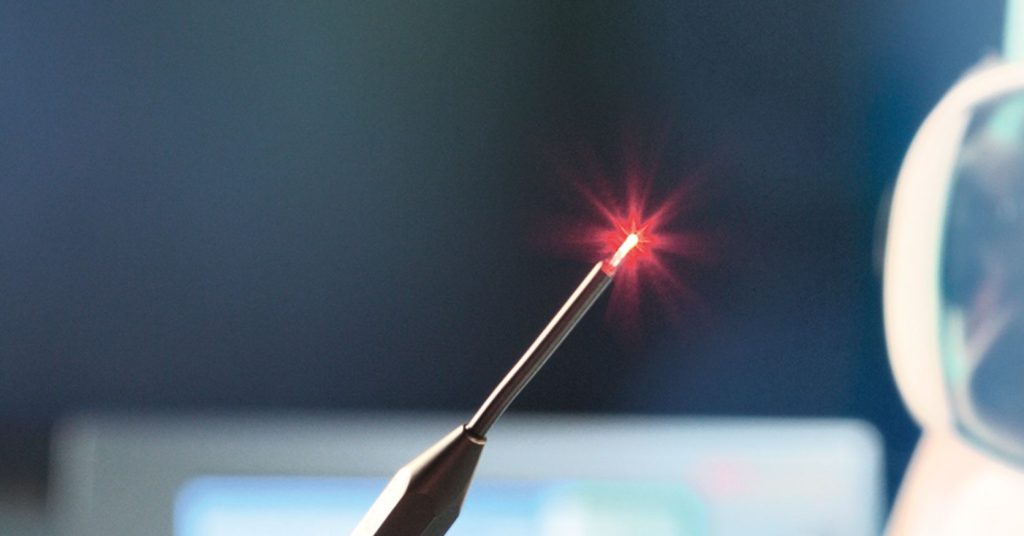The most aggressive and at the same time effective treatment of hemorrhoids symptoms is the surgical removal of the inflamed hemorrhoidal tissue. In previous years, this procedure was performed through open surgery, during which the tissue was cut, the blood vessels cauterized, and finally the tissue was sutured. Although effective, this particular method is characterized by a significant percentage of post-operative pain and possibly other complications. Now, the advancement of technology has made possible the hemorrhoids laser treatment.
Hemorrhoids laser treatment is a minimally invasive surgical technique characterized by the same effectiveness rates as classical surgery. The procedure is very fast and painless, while it offers significant advantages to the patient, however, not everyone can undergo it.

What is the procedure for hemorrhoids laser treatment?
Laser hemorrhoid surgery uses a precision laser, cauterization tool, and other surgical instruments to perform the same procedure as a classic scalpel operation. Using a focused beam of light, the inflamed hemorrhoidal tissue is cut and removed without affecting the surrounding healthy tissue. At the same time, the laser performs cauterization and consequently seals the blood vessels in the area.
This specific treatment method is characterized by an excellent rate of accuracy and speed compared to the classic surgery. Hemorrhoid laser treatment is performed on an outpatient basis and the patient returns home the same day. However, if the patient has additional health issues, an overnight hospital stay is indicated.
Similarities and differences of laser treatment of hemorrhoids with conventional surgery
If it is possible to perform laser surgery for the treatment of hemorrhoids, then this method is recommended compared to the conventional surgery via scalpel. The preference for this particular technique arises because of the multiple advantages offered by laser surgical treatment, in relation to traditional procedures.
What hemorrhoid laser treatment and conventional surgery have in common is that they both perform hemorrhoidectomy. This procedure consists in removing the entire hemorrhoidal tissue, minimizing the possibility of future recurrence. Both surgical methods are performed in an operating room of a hospital or surgery center, while the administration of anesthesia, either local or general, is necessary for their implementation.
For many years, the classic hemorrhoidectomy surgery has been the method of choice for alleviating the unpleasant symptoms of the condition. The majority of surgeons in this specialty know the procedure for performing this operation. However, laser hemorrhoid surgery is a newer technique that requires training and investment in special tools. Many surgeons choose not to apply this treatment method because of the cost, however the clearly improved postoperative course offered to the patient by the surgical use of the laser justifies the money investment.
Any surgery comes with the risk of complications, however laser hemorrhoid surgery minimizes post-operative complications. This is because it does not cause damage to the surrounding healthy tissues around the area of inflammation, reducing at the same time the risk of developing an infection. Also, the sealing of the blood vessels offered by the laser treatment minimizes the risk of bleeding both during and after the procedure
Postoperative recovery time
The patient can return home after both classic hemorrhoid surgery or surgical laser treatment on the same day, while the procedure is usually performed on an outpatient basis.
After classic hemorrhoid surgery, the patient feels pain and tenderness that take a long time (a month or more) to subside. This happens as stitches are placed in the affected sensitive area. Laser surgery allows patients to return to their daily activities faster, minimizing pain and other complications.
If you experience severe or chronic symptoms of hemorrhoids, laser surgical treatment may be a worthwhile option. Schedule your appointment to properly evaluate treatment options.

